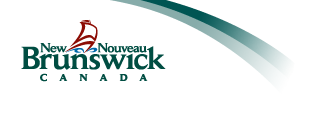"The only way you can be sure your water supply is safe is to have it tested."
Water Testing
It is important to regularly test your well water for bacteria and a standard set of chemical and physical parameters. The term “Parameters” refers to the minerals, chemicals, bacteria, etc. that are tested in a water sample. Use an accredited water testing laboratory.
Appropriate water sampling bottles and instructions on proper sampling may be obtained from your nearest Service New Brunswick location, the New Brunswick Analytical Services laboratory, or a private laboratory. The cost of analyzing water samples can range from $6 for a single parameter to $130 or more for a full set of chemical parameters. The cost can vary depending on the lab and the number of parameters being tested. Many labs offer water quality analysis packages that are usually less expensive than testing for individual parameters. These packages provide more information which allows for better interpretation of water quality results and assessment of water treatment requirements.
Please refer to the New Brunswick Drinking Water Quality Guideline list for recommended parameters to test in your water supply. These parameters are recommended because:
- Their presence may interfere with the removal of parameters that may affect your health.
- They may affect the type of treatment you select for your water supply or the treatment system’s effectiveness.
- They may be indicators of overall water quality.
